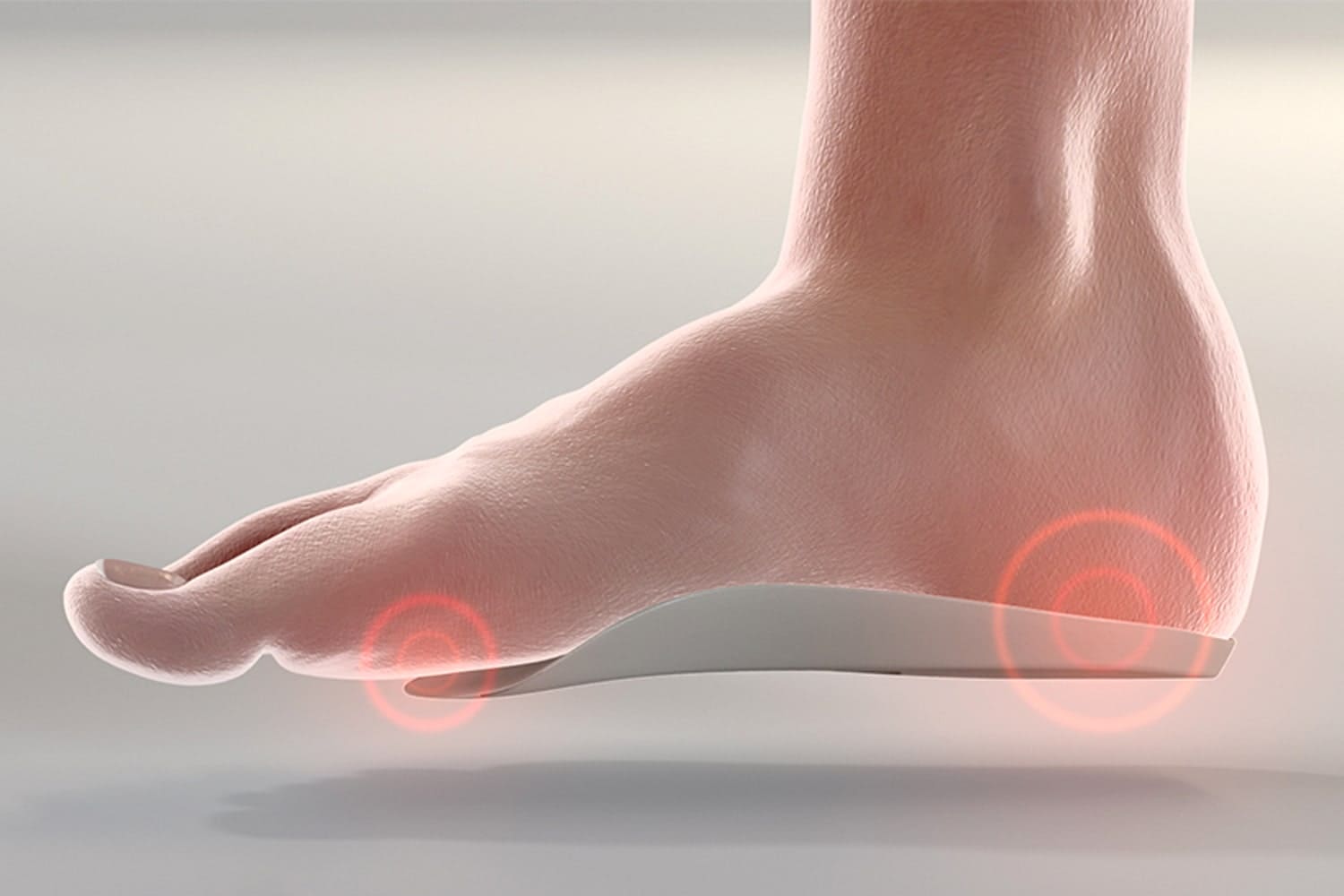Discover the secrets to overcoming heel spurs with our expert guide. Learn about causes, symptoms, and cutting-edge treatments to restore your mobility and enjoy a pain-free lifestyle. Dive into our comprehensive approach for lasting relief.
Introduction
Heel spurs are more than just a foot problem; they’re a barrier to your daily joy and mobility. Characterized by bony growths on the underside of the heel bone, these spurs can lead to sharp, persistent pain that affects every step you take. But there’s hope. Our guide dives deep into understanding heel spurs, from their root causes to innovative treatment options, offering you a pathway to pain-free living. Whether you’re looking to manage symptoms or find preventative strategies, we’ve got you covered.
Table of Contents
Understanding Heel Spurs
Heel spurs are a common foot condition that can cause discomfort and pain, affecting daily activities and overall quality of life. These bony growths, or calcifications, develop on the underside of the heel bone, where they can become a source of persistent pain.

Understanding the causes, symptoms, and available treatments for heel spurs is crucial for those affected by this condition, as well as for individuals looking to prevent its occurrence.
What Causes Heel Spurs?
Heel spurs result from chronic local inflammation at the insertion of soft-tissue tendons or fascia in the area. This inflammation can be due to several factors:
Strain and Pressure
Regular participation in activities that put excessive strain on the foot, such as running, jogging, or jumping, can lead to the development of heel spurs. These activities exert repetitive stress on the heel bone and surrounding tissues, prompting the body to respond by depositing calcium in the area, which eventually forms a spur.
Plantar Fasciitis
One of the most common associations with heel spurs is plantar fasciitis, a condition characterized by the inflammation of the plantar fascia. This thick band of tissue runs across the bottom of your foot, connecting the heel bone to the toes, and supports the arch of the foot. When the plantar fascia is overstretched or inflamed, it can lead to the formation of a heel spur as the body attempts to strengthen the area.

Foot Mechanics and Wear
Individuals with abnormal walking gaits, flat feet, or high arches are at increased risk of developing heel spurs. Additionally, wearing poorly fitted or worn-out shoes that fail to adequately support the foot can exacerbate the problem.

Symptoms of Heel Spurs
The manifestation of symptoms in individuals with heel spurs can significantly vary, with some people experiencing no discomfort whatsoever. However, for those who do encounter symptoms, they can range from mild to severe, impacting daily activities and overall foot health. Below is an overview of the common symptoms associated with heel spurs:
Heel Pain
Intensity and Nature: The most prominent symptom of heel spurs is a sharp, intense pain in the heel. This discomfort is often described as a stabbing sensation that is most acute when initiating movements after a period of inactivity, such as the first steps taken in the morning or standing up after sitting for an extended period.

Progression: Initially, the pain may diminish as the day progresses and movement continues, but without treatment, the pain can become constant and less dependent on movement or rest.
Swelling and Inflammation
Physical Appearance: Individuals with heel spurs may notice swelling around the heel area, which can be accompanied by redness. The swelling is a result of the body’s inflammatory response to the spur, indicating an attempt to protect and heal the area.

Sensitivity: The inflamed region around the heel spur can become quite tender, making it uncomfortable to apply pressure or touch the area directly.
Warmth
Sensation: The area around a heel spur can feel unusually warm to the touch. This warmth is another indicator of inflammation, as increased blood flow to the area is part of the body’s mechanism to fight off injury and facilitate healing.
Similarity to Plantar Fasciitis Symptoms
Diagnostic Challenges: It’s crucial to recognize that the symptoms of heel spurs closely mimic those of plantar fasciitis, a condition involving inflammation of the plantar fascia ligament that stretches across the bottom of the foot. Both conditions can cause heel pain and discomfort, making it essential for individuals to seek a professional evaluation to obtain an accurate diagnosis.

Professional Assessment: A healthcare provider may use physical examinations, medical history, and imaging tests such as X-rays to distinguish between heel spurs and plantar fasciitis, ensuring that patients receive the most appropriate treatment based on their specific condition.
Understanding these symptoms and their potential impact is vital for individuals experiencing heel discomfort. Early recognition and professional diagnosis are key to managing heel spurs effectively, preventing further pain, and maintaining foot health. If you suspect you may have a heel spur, consulting with a healthcare professional can provide clarity and guide you towards the best treatment options for your situation.
Treatment Options
The approach to treating heel spurs is multifaceted, aiming not only to alleviate the immediate discomfort but also to tackle the root causes of the condition to prevent future occurrences. Here’s an expanded look at the various treatment options and preventive measures for heel spurs:
Conservative Measures
Rest and Ice Application: One of the first steps in managing heel spurs involves minimizing activities that exacerbate the pain, coupled with applying ice to the affected area to reduce swelling and inflammation. Ice packs should be used for about 15-20 minutes, several times a day, especially after any activity that triggers discomfort.
Over-the-Counter Pain Relievers: Medications such as ibuprofen or naproxen can help manage the pain and reduce inflammation. These should be used according to the package instructions or as advised by a healthcare professional.
Stretching Exercises and Physical Therapy: Specific exercises designed to stretch the plantar fascia and Achilles tendon, as well as strengthening exercises for the lower leg muscles, can alleviate pressure on the heel spur and provide relief. A physical therapist can tailor a regimen to your specific needs, ensuring that you perform the exercises correctly and effectively.
Orthotic Devices
Supportive Shoe Inserts: Custom orthotic devices prescribed by a podiatrist or over-the-counter shoe inserts can offer significant relief by providing proper support to the foot’s arch and cushioning to the heel. These devices work by redistributing pressure away from the heel spur and correcting any abnormal walking patterns that could exacerbate the condition.

Medical Treatments
Corticosteroid Injections: For persistent pain not relieved by conservative measures, corticosteroid injections directly into the affected area can provide temporary relief from inflammation and discomfort. However, these injections are generally considered only after other non-invasive treatments have been tried, due to potential side effects.
Surgery
Surgical Intervention: In rare cases where non-surgical treatments fail to relieve heel spur pain, and the condition severely impacts daily activities, surgery may be considered. Surgical options could involve removing the heel spur or releasing tension in the plantar fascia. Surgery is typically seen as a last resort and comes with risks that should be thoroughly discussed with a healthcare provider.
Prevention
Wearing Supportive Footwear
Choosing shoes with adequate arch support, cushioning, and a comfortable fit can significantly reduce the risk of developing heel spurs. Avoid wearing high heels or shoes with minimal support, especially if you spend a lot of time on your feet.
Avoiding High-Impact Activities
Modifying your exercise routine to include low-impact activities can help prevent undue stress on the heel. Swimming and cycling are excellent alternatives to running or jumping exercises.
Maintaining a Healthy Weight
Extra weight can increase the strain on your feet, contributing to the development of heel spurs. Adopting a healthy diet and regular exercise regimen can help manage your weight and reduce foot stress.
Regular Stretching
Incorporating stretching exercises for the calf muscles, Achilles tendon, and plantar fascia into your daily routine can improve flexibility and reduce tension in the foot, lowering the risk of heel spurs.

By understanding and implementing these treatment and prevention strategies, individuals can effectively manage heel spur symptoms and reduce the likelihood of their recurrence, leading to improved foot health and mobility.
FAQ
Q: What exactly are heel spurs? A: Heel spurs are calcified growths that form on the heel bone due to chronic inflammation at the soft-tissue tendon or fascia insertion points.
Q: What causes heel spurs? A: Factors include strain from physical activities, plantar fasciitis, abnormal foot mechanics, and wearing unsupportive footwear.
Q: Can heel spurs be treated without surgery? A: Yes, there are multiple non-surgical treatments including rest, ice application, pain relievers, stretching exercises, physical therapy, and orthotic devices.
Q: How can I prevent heel spurs? A: Preventative measures include wearing supportive footwear, avoiding high-impact activities, maintaining a healthy weight, and regular stretching.
Conclusion
Heel spurs don’t have to dictate the quality of your life. With the right knowledge and approach, managing and even preventing this condition is entirely possible. Understanding the causes and symptoms is the first step toward taking control of your foot health. By adopting effective treatment strategies and making lifestyle adjustments, you can step forward into a more comfortable, active life without the shadow of heel pain. Remember, consulting with a healthcare professional is crucial to tailor the best treatment plan for your unique situation. Embrace the journey to recovery and reclaim the joy of movement.










Your article helped me a lot, is there any more related content? Thanks!